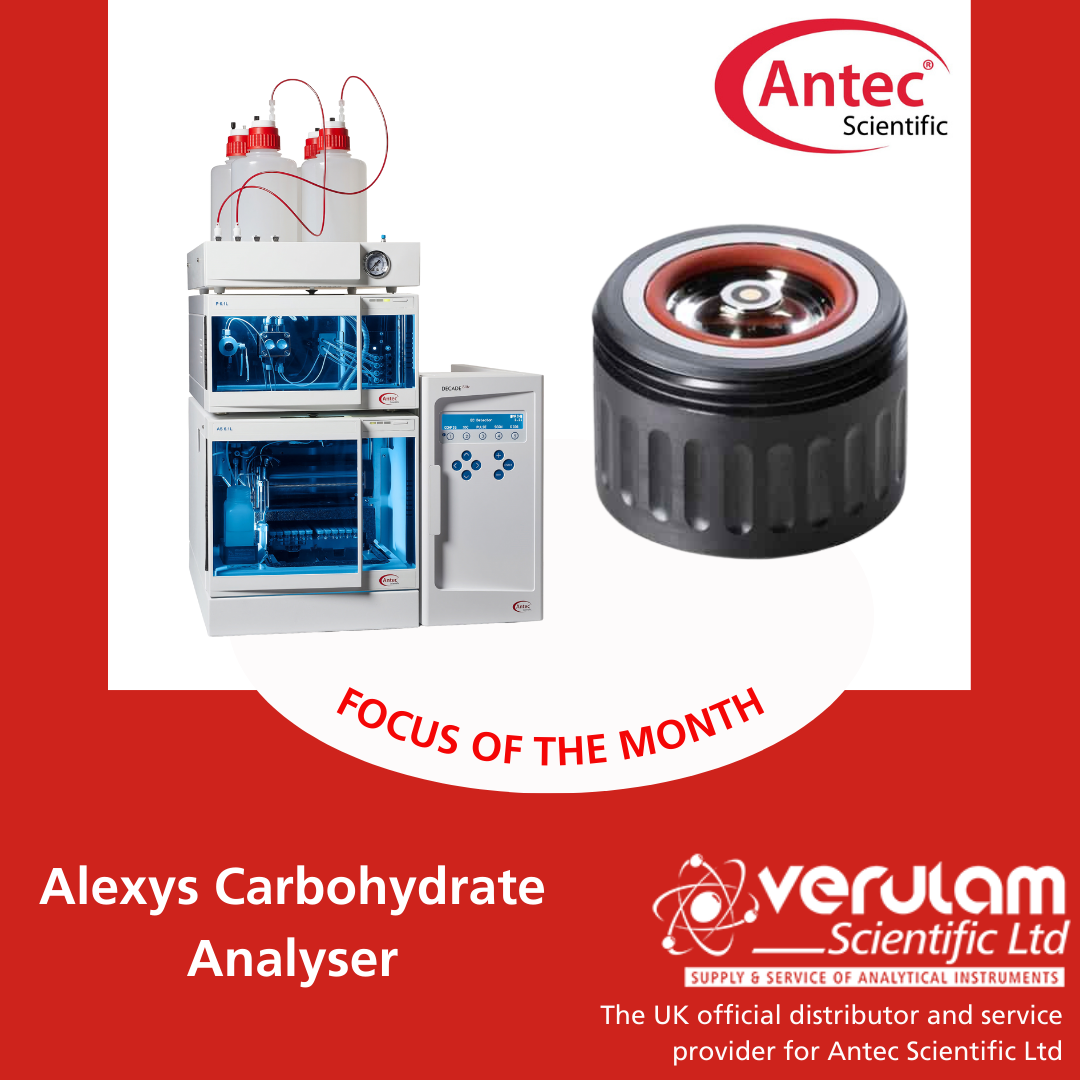The ALEXYS Carbohydrate Analyzer is based on High Performance Anion Exchange Chromatography with Pulsed Amperometric Detection (HPAE-PAD) using a gold working electrode. But what is HPAE-PAD?
In pulsed amperometric detection (PAD), a rapid sequence of potential steps is applied. During a part of this ‘pulse sequence’, the signal is sampled. The other part of the sequence of steps, are oxidative and reductive cleaning steps. During this cleaning, the gold working electrode is regenerated. The process usually repeats about every half second. This ensures stable and reproducible detection conditions.
The use of PAD is necessary in carbohydrate analysis because oxidation results in insoluble reaction products that stick to the electrode surface. This contaminates the electrode and causes poor reproducibility. When using PAD with cleaning steps, the electrode remains clean and reproducible.
The simplest PAD mode involves three steps (E1, E2, E3) where E2 and E3 are oxidative and reductive steps respectively. One drawback of this 3-step PAD is the relatively long oxidative and reductive cleaning step, leading to the consumption of the gold electrode surface.
To prolong the electrode lifetime a 4-step PAD (E1, E2, E3, E4) can be employed where E2 and E4 are reductive steps and E3 is an oxidative step. This approach guarantees minimal electrode degradation, sustained detection reliability over time, and the achievement of highest sensitivity.
Discover more about the Antec Alexys Carbohydrate Analysers: Electrochemical Detectors & Analysers | Antec Scientific (verulamscientific.com)
Buy Antec consumables on our webshop: Buy Laboratory Supplies Online – Verulam Scientific
Or contact the Verulam Scientific team on 01234 381000 or email [email protected]





